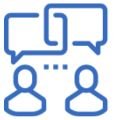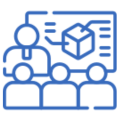Master the Power of Data with R for Real-World Business Insights
Business Statistics by Using R Programming
No prior programming experience is needed — we start from the very basics of R and build up gradually.



No prior programming experience is needed — we start from the very basics of R and build up gradually.
In the modern era of data explosion, businesses thrive not only on intuition but more importantly on evidence-based decisions. To keep pace with the ever-evolving landscape of analytics and big data, it’s essential to possess a robust understanding of business statistics — and there’s no better tool to aid in that journey than R programming.
“Business Statistics by Using R Programming” is a comprehensive learning path designed to help you bridge the gap between statistical theory and real-world business applications. This course equips you with both conceptual knowledge of statistics and hands-on experience with R, enabling you to make data-driven decisions, perform high-quality analyses, and extract actionable insights that can drive business growth.
Whether you’re an aspiring data analyst, a business professional looking to upskill, or a student preparing for a career in analytics, this course offers you everything you need to become proficient in both quantitative reasoning and data manipulation with R.
Statistics is the language of data, and in the business world, it’s the tool that translates raw numbers into meaningful decisions. R, on the other hand, is a versatile and powerful programming language used by statisticians, data scientists, and analysts across the globe.
📊 Data is the new oil — But without statistics, it’s just noise. With this course, you’ll learn how to mine useful insights from data using R.
💻 R is open-source and widely adopted — Organizations from tech giants to financial institutions use R for analytics, forecasting, and decision-making.
📈 Statistical literacy is a top skill — Business roles increasingly demand professionals who can understand trends, test hypotheses, and present findings clearly.
🚀 Career advancement — Whether you’re in marketing, finance, operations, HR, or entrepreneurship, adding R and statistics to your skillset sets you apart in the job market.
🔬 Hands-on practice — You’ll not only learn concepts but apply them through exercises, projects, and case studies using real-world datasets.
This course is perfect for:
🎓 Business Students & MBA aspirants who want a strong foundation in analytics
💼 Professionals in Marketing, Finance, HR, or Operations who want to analyze data effectively
🧑💻 Aspiring Data Analysts and Data Scientists looking to build their technical toolkit
📊 Researchers and Academicians who want to transition into applied statistical analysis
🚀 Entrepreneurs and Startups aiming to use data to validate business strategies and scale smartly
By the end of this course, you’ll be able to:
Understand and apply core statistical principles in business contexts
Use R programming to process, clean, and analyze business data
Create meaningful visualizations and dashboards using ggplot2
Conduct hypothesis testing, regression modeling, and forecasting
Make strategic recommendations based on statistical analysis
Solve real business problems using end-to-end analytical workflows






Importance of statistical thinking in business
Understanding types of data: qualitative vs quantitative
Measurement scales and levels of data
Role of statistics in business decision-making
Installing R and using RStudio interface
Data structures in R: vectors, lists, matrices, data frames
R basics: operators, functions, and packages
Importing and exporting data (CSV, Excel, web scraping)
Handling missing values
Data transformation and wrangling using dplyr
Data reshaping with tidyr
String manipulation and date-time formatting
Measures of central tendency and dispersion
Creating frequency tables and summary reports
Using ggplot2 for histograms, bar plots, box plots, scatter plots
Creating aesthetically appealing visualizations for business insights
Fundamental concepts of probability in business
Conditional probability and Bayes’ Theorem
Discrete distributions: Binomial, Poisson
Continuous distributions: Normal, Exponential
Sampling methods and sampling distribution
Estimation: confidence intervals for means and proportions
Hypothesis testing: one-sample and two-sample tests
Using t-tests, z-tests, chi-square tests in R
Scatterplots and correlation coefficients
Simple linear regression
Multiple regression and variable selection
Diagnostic measures and residual analysis
Predictive modeling in business scenarios
Understanding time series data in business (sales, revenue, etc.)
Trend analysis and seasonal decomposition
Moving averages and exponential smoothing
Forecasting models using forecast and ts packages
Retail analytics: customer segmentation and product demand
Financial analytics: portfolio returns and risk analysis
HR analytics: employee attrition and hiring patterns
Marketing analytics: campaign effectiveness and customer churn
Choose a real business problem
Define objectives and gather data
Analyze, model, and visualize findings using R
Present a full-fledged analytical report with actionable recommendations
Social Chat is free, download and try it now here!